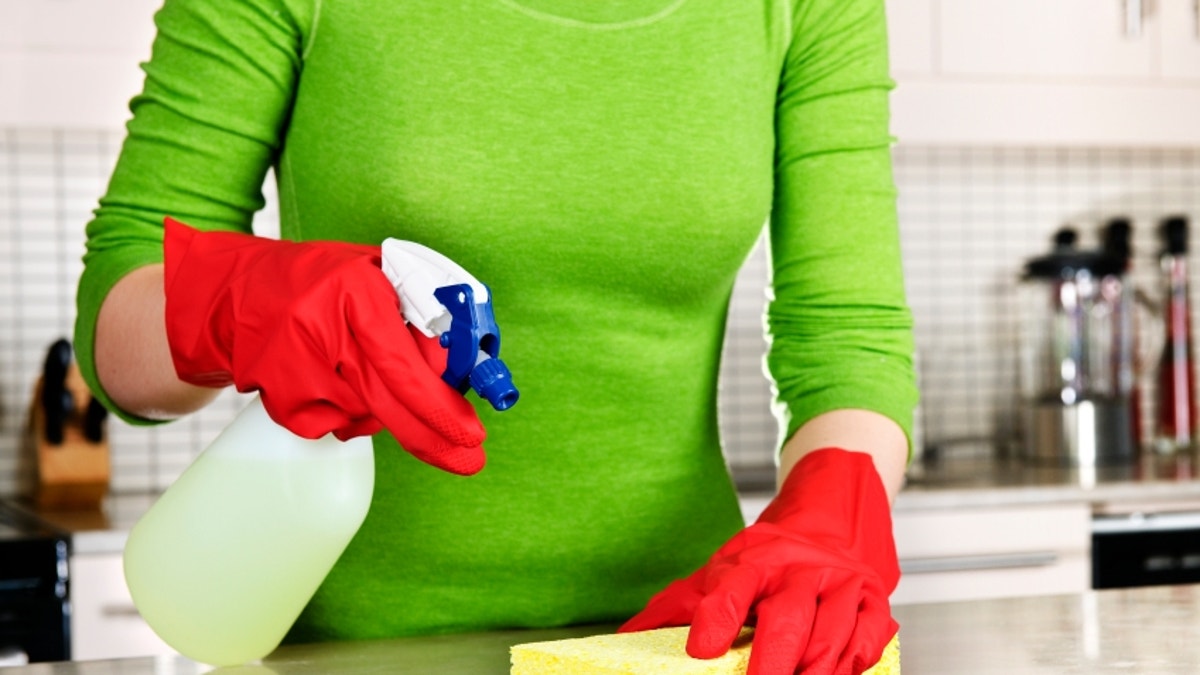
Girl cleaning kitchen with sponge and rubber gloves
Most at-home cooks probably feel pretty confident that they know how to handle raw foods, avoid germs and bacteria, and generally keep their kitchen spick-and-span. But a closer look at their cutting boards—and hands—might suggest otherwise.
As a Health.com poll of some 400 readers and 100 professional chefs reveals, our counter intelligence is still somewhat...medieval.
Here's how to make sure the only thing you spread—and get!—in the kitchen is good cheer.
[sidebar]
Wash rinds
Though 68 percent of you (and 71 percent of chefs) think poultry is the riskiest food, raw produce actually causes more cases of food-sickness outbreaks.
Scrub and rinse melons, squash, and other foods with inedible rinds to remove bacteria that can transfer to the flesh when you cut into it.
Take temps
Only 29 percent of Americans have ever used a food thermometer, but it's the best way to tell if you cooked your meal enough to kill bacteria. Pork, ham, steak, roast, and lamb chops need to reach 145 degrees F, ground beef isn't safe to eat until it's 160 degrees F, and poultry requires 165 degrees F.
Pick up a food thermometer (digital works best) in any housewares store.
Clean sponges
Three out of four kitchen sponges and rags tested positive for potentially dangerous bacteria, per a recent study.
Nuke sponges on medium for a minute or run them through the dishwasher, including a dry cycle.
Use two cutting boards
Designate one for meat and the other for veggies, so that bacteria from uncooked beef and poultry don't stray into your salad.
For the same reason, use separate knives for slicing meat and veggies.
Sterilize the fridge
And not just the outside. Every couple of weeks, wipe down refrigerator drawers using hot water and soap. Rinse with warm water and dry with a dishcloth.
Another safety tip? Drawers—the coolest areas of the fridge—should hold meats, cheeses, vegetables, and anything else that will go bad quickly.
Wash up
It's an essential way to prevent the spread of germs—but only half of people do it, says our poll.
Here's how to wash your hands thoroughly: For at least 20 seconds (roughly the amount of time it takes to whistle "Happy Birthday" twice), scrub all the surfaces on your hands and between your fingers. And be sure to dry your hands completely afterward.
